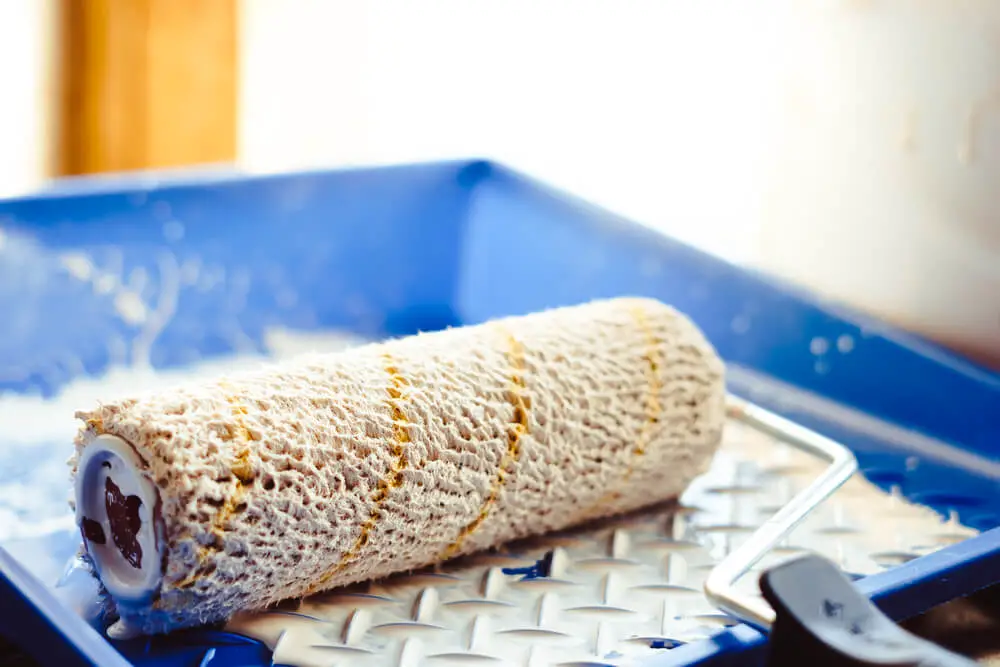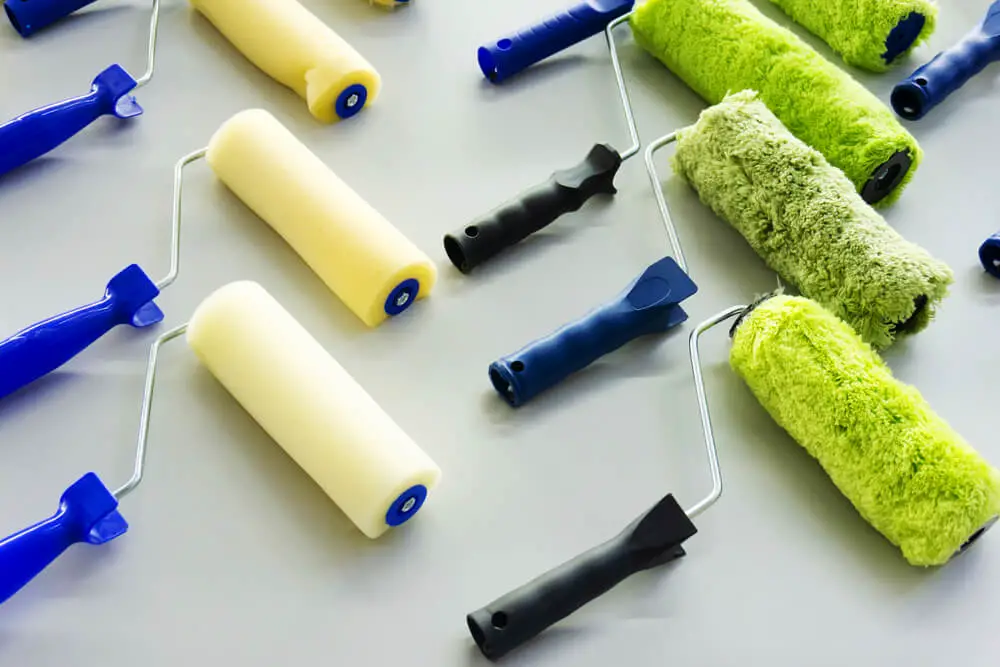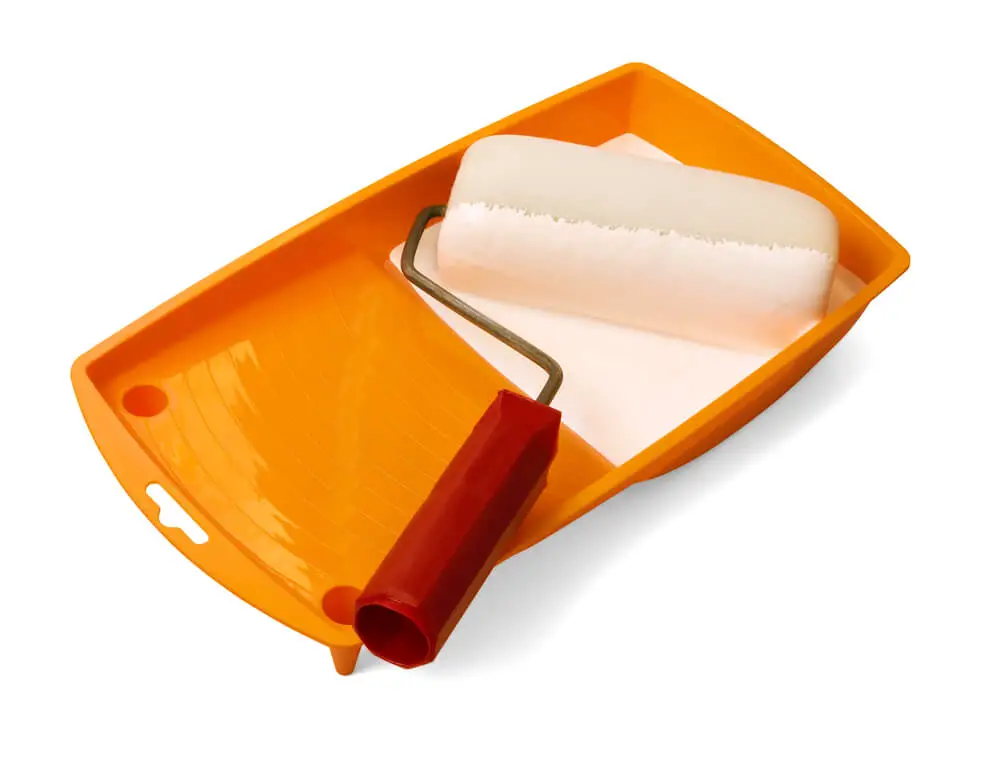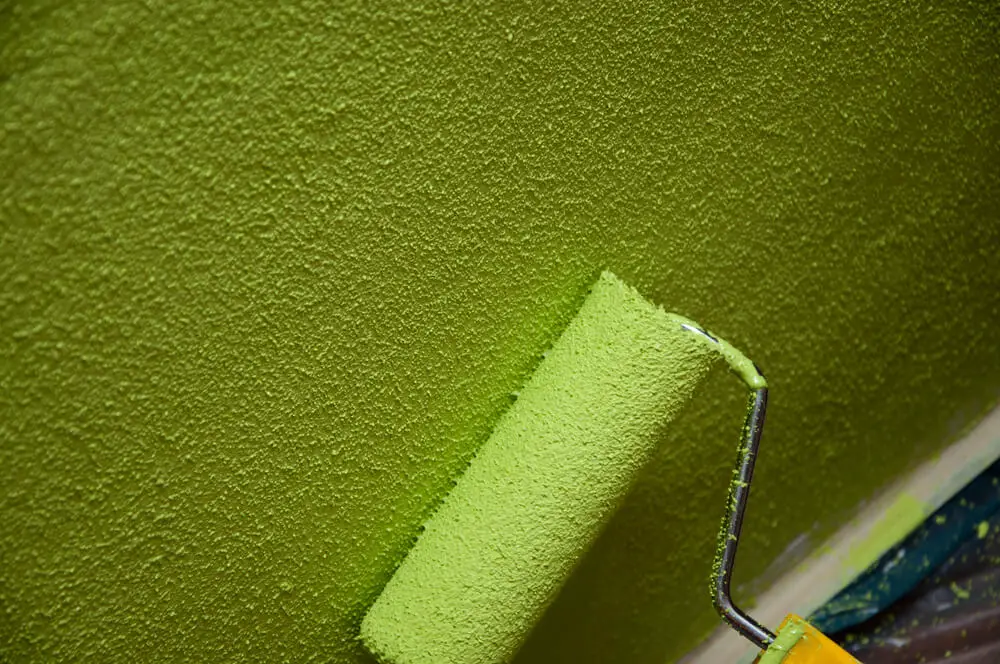Introduction
When undertaking a painting project, whether it’s refreshing a room or transforming a piece of furniture, most of us give little thought to the tools we use.
Paint rollers, for instance, are an essential tool in many such projects, valued for their ability to cover large areas quickly and efficiently.
But have you ever stopped to consider the environmental implications of these seemingly inconspicuous tools? More specifically, are paint rollers recyclable?
In this comprehensive guide, we delve into the components of paint rollers, their recyclability, and the environmental implications of their use.
We also explore eco-friendly alternatives, proper disposal methods, and the role both consumers and manufacturers play in managing paint roller waste.
This information will equip you with the knowledge you need to make more sustainable choices in your painting projects. Let’s roll into it!
Are Paint Rollers Recyclable

Paint rollers are standard tools used in both professional and DIY painting projects. They consist of a handle, frame, and a cylindrical roller cover made of various materials such as foam, lambswool, or synthetic fibers.
The roller cover absorbs and evenly distributes the paint over surfaces. Understanding the components is essential in assessing recyclability, as different materials have varying recycling processes.
For example, metal frames are typically recyclable, but roller covers containing mixed fibers might not be.
The Problem with Disposable Paint Rollers
In today’s fast-paced world, disposable paint rollers have become popular for their convenience. While they might be handy for one-time use, they contribute to environmental waste.
Most disposable rollers are made from mixed materials that can be difficult to separate and recycle. This leads to more waste in landfills, where these rollers can take hundreds of years to break down.
The increase in disposable paint rollers has led to growing concerns about their environmental impact.
The Environmental Impact of Non-Recyclable Paint Rollers
Non-recyclable paint rollers pose a significant environmental challenge. When discarded, they often end up in landfills, where they can take centuries to decompose.
Materials such as certain plastics and synthetic fibers can leach harmful chemicals into the soil and groundwater.
Additionally, the manufacturing process of these non-recyclable rollers often involves the use of fossil fuels, contributing to greenhouse gas emissions.
Overall, the lifecycle of non-recyclable paint rollers has far-reaching effects on the environment.
Differentiating Between Recyclable and Non-Recyclable Paint Rollers

It’s important to distinguish between recyclable and non-recyclable paint rollers to make responsible disposal choices.
Recyclable paint rollers are typically made of easily separable materials like metal and certain plastics. Non-recyclable ones often include mixed materials or synthetic fibers that aren’t processed through regular recycling facilities.
By understanding the materials and checking recycling guidelines, consumers can make informed decisions on which paint rollers to purchase and how to dispose of them properly.
Common Materials Used in Paint Rollers
Paint rollers are constructed using a variety of materials, such as plastic, metal, foam, and different types of fibers. The choice of materials affects the performance, cost, and recyclability of the rollers.
For example, metal frames are generally recyclable, while foam rollers might not be. Understanding the common materials used in paint rollers can guide consumers in making environmentally conscious purchasing decisions.
The Paint Roller Manufacturing Process and its Implications on Recyclability
The manufacturing process of paint rollers involves multiple steps, including selecting materials, molding, cutting, and assembling.
Combining different materials in a single roller can hinder recycling, as separating them might be challenging or impossible.
Moreover, the manufacturing itself may consume significant energy and resources. This highlights the importance of innovation in design and manufacturing to create more sustainable and recyclable paint rollers.
The Challenges of Recycling Used Paint Rollers

Recycling paint rollers is not a straightforward process. Challenges include the removal of residual paint, separating mixed materials, and finding recycling facilities that accept specific roller components.
Additionally, the fibers in roller covers can become contaminated with paint, making them difficult to recycle.
These challenges often lead to paint rollers being discarded as general waste, contributing to environmental issues.
How to Properly Dispose of Non-Recyclable Paint Rollers
Proper disposal is crucial to minimize the environmental impact of paint rollers that are not recyclable. This might include cleaning them thoroughly and disposing of them in accordance with local regulations.
Some areas might have special facilities for handling non-recyclable waste, while others might require specific disposal methods.
Understanding and following local guidelines ensure that non-recyclable paint rollers are disposed of responsibly.
Creative Ways to Reuse Old Paint Rollers
Before considering recycling or disposal, reusing old paint rollers can be a sustainable option.
They can be cleaned and used in different painting projects or creatively repurposed into items like garden tools, art projects, or even decorative pieces.
Individuals can reduce waste and contribute to a more circular economy by finding new uses for old paint rollers.
The Rise of Eco-Friendly Paint Rollers: A More Sustainable Option

With growing awareness of environmental issues, many manufacturers are developing eco-friendly paint rollers.
These rollers are designed with recyclable materials or produced using sustainable practices, reducing their environmental footprint.
By choosing eco-friendly paint rollers, consumers can support sustainability while enjoying the same functionality and quality of traditional rollers.
Cleaning and Maintenance: Extending the Lifespan of Paint Rollers
Proper cleaning and maintenance can significantly extend the lifespan of paint rollers, reducing the need for frequent replacements. This includes thorough cleaning after each use, proper drying, and appropriate storage.
Users can enjoy repeated use by taking care of paint rollers, saving money, and reducing waste.
Innovation in Paint Roller Design for Improved Recyclability
In response to environmental concerns, some companies are innovating paint roller designs to enhance recyclability.
This includes using single-material construction, detachable parts for easy separation, or biodegradable materials.
Such innovations are paving the way for more sustainable painting tools, aligning with growing consumer demand for environmentally responsible products.
Regulations and Policies Related to Paint Roller Disposal

Various countries and regions may have specific regulations and policies regarding the disposal of paint rollers. These regulations aim to reduce environmental harm by encouraging responsible disposal and recycling.
Compliance with these laws is vital, and awareness of local regulations ensures that individuals and businesses adhere to legal and ethical disposal practices.
The Future of Paint Rollers: Are Biodegradable Options the Solution?
Biodegradable paint rollers are emerging as a promising solution to disposal challenges.
Made from materials that break down naturally, they offer a more environmentally friendly alternative to traditional rollers.
Though still in development, biodegradable paint rollers represent a significant step towards a more sustainable future for painting tools.
Impact of Consumer Choices on Paint Roller Waste Management
Consumer choices play a vital role in paint roller waste management. By opting for recyclable or reusable paint rollers, individuals can directly impact the reduction of waste.
Awareness, education, and responsible purchasing can significantly shift the market towards more sustainable options, leading to positive environmental changes.
How Companies Are Responding to the Call for Recyclable Paint Rollers

Companies increasingly recognize the need for recyclable paint rollers and are taking action. This includes developing products with recyclable materials, offering take-back programs, and collaborating with recycling facilities.
Corporate responsibility and responsiveness to consumer demand are driving positive changes in the industry, leading to more sustainable paint roller options.
Advocacy for Responsible Paint Roller Use and Disposal: What You Can Do
Individuals have the power to advocate for responsible paint roller use and disposal.
This can include choosing sustainable options, following proper disposal guidelines, and even raising awareness in their community.
By acting responsibly and encouraging others to do the same, everyone can contribute to a more sustainable future for paint rollers.
Relevant Table
| Parameter | Recyclable Paint Rollers | Non-Recyclable Paint Rollers | Eco-Friendly Paint Rollers | Biodegradable Paint Rollers |
|---|---|---|---|---|
| Materials Commonly Used | Metal, Plastic | Mixed Materials | Sustainable Materials | Biodegradable Materials |
| Environmental Impact | Lower | Higher | Lower | Lower |
| Average Cost (Relative) | Moderate | Low | Moderate to High | High |
| Consumer Demand (As of 2023) | Increasing | Decreasing | Increasing | Emerging |
Conclusion
The subject of paint roller recyclability is a crucial aspect of sustainable painting practices.
While many paint rollers currently on the market pose challenges to recycling due to their mixed-material components, advancements in design and manufacturing are creating more sustainable options.
The future of paint rollers lies in eco-friendly, recyclable, or even biodegradable solutions. As consumers, our choices matter.
By opting for reusable or recyclable paint rollers and advocating for responsible disposal practices, we can contribute to reducing environmental harm and shaping a more sustainable future.

















